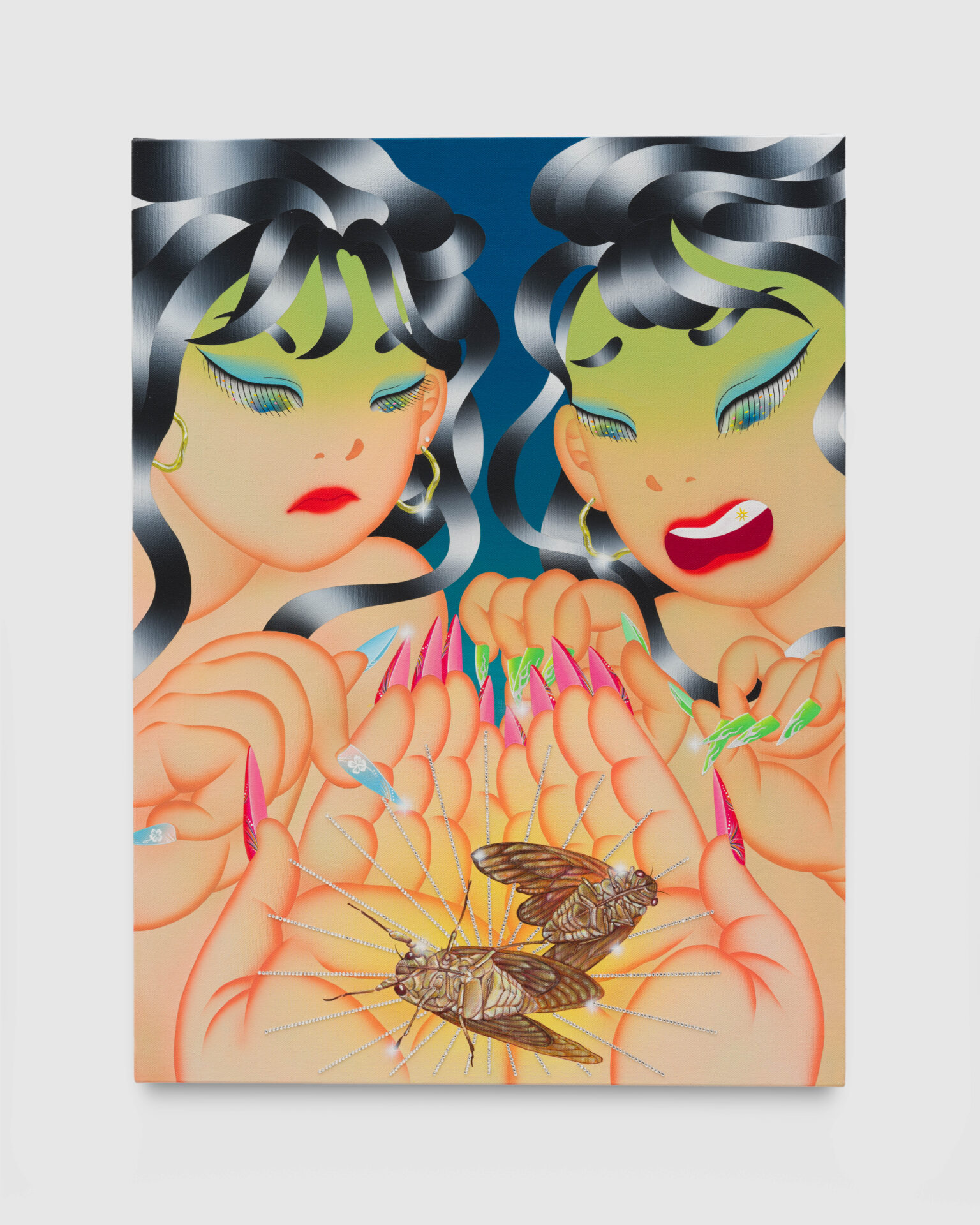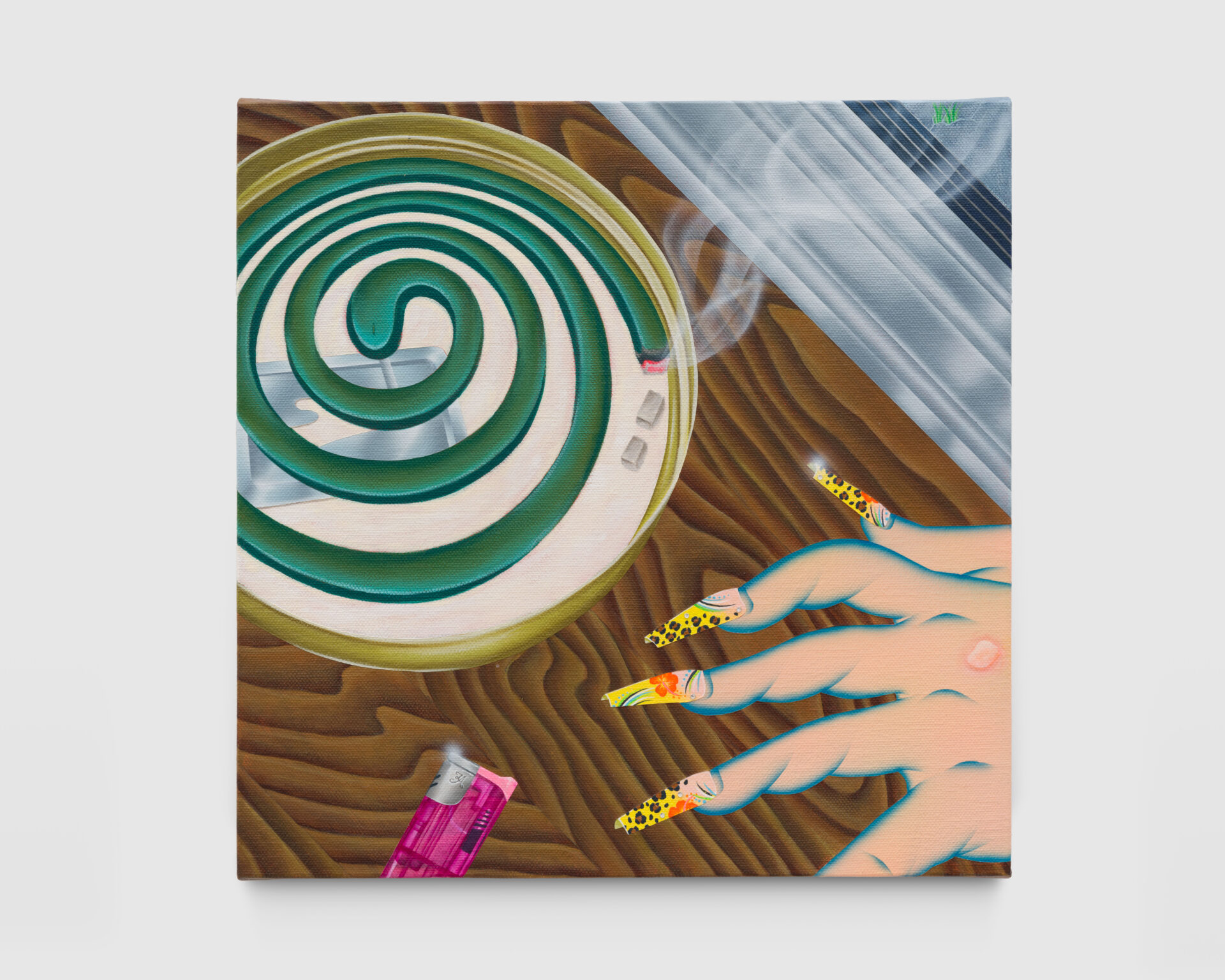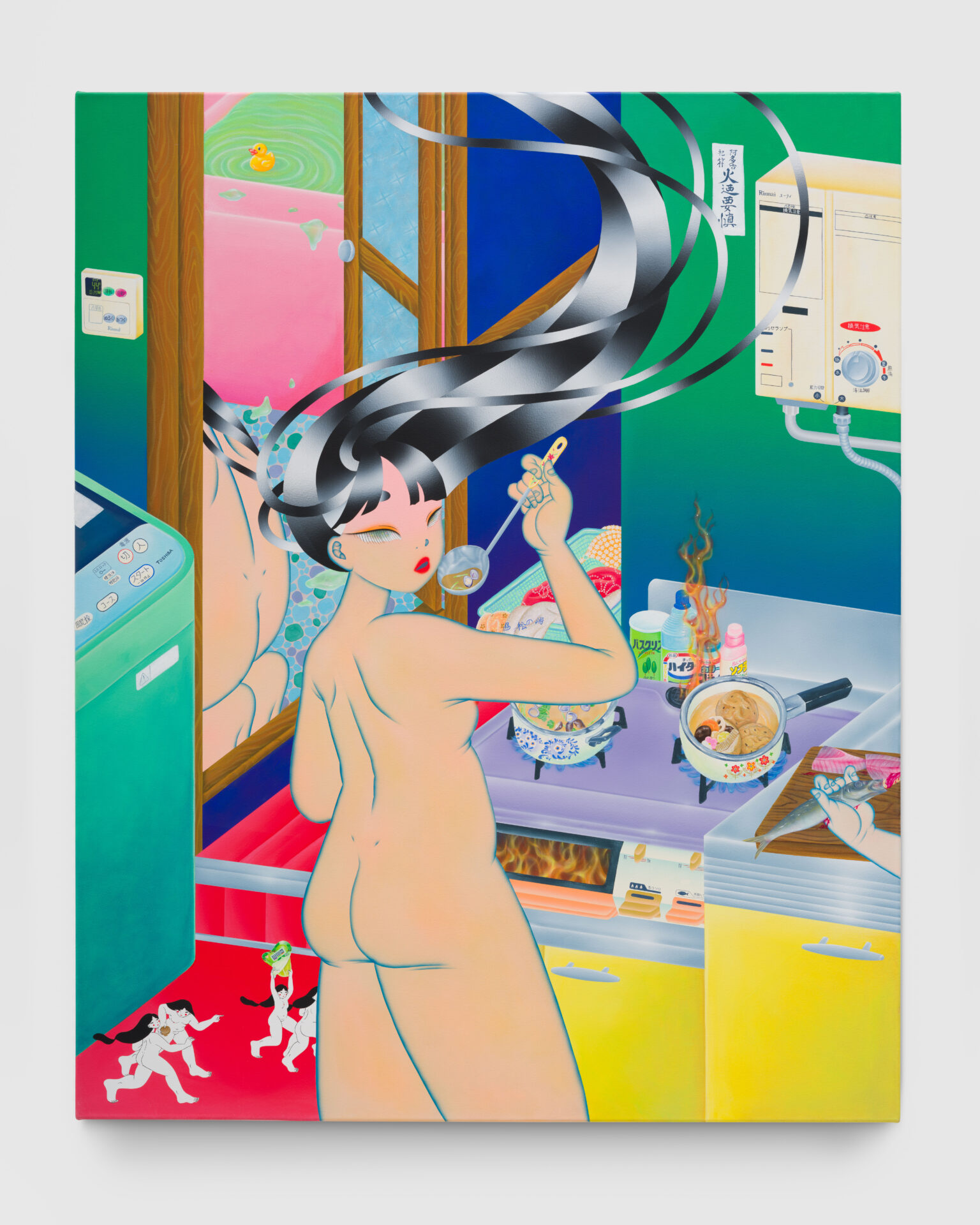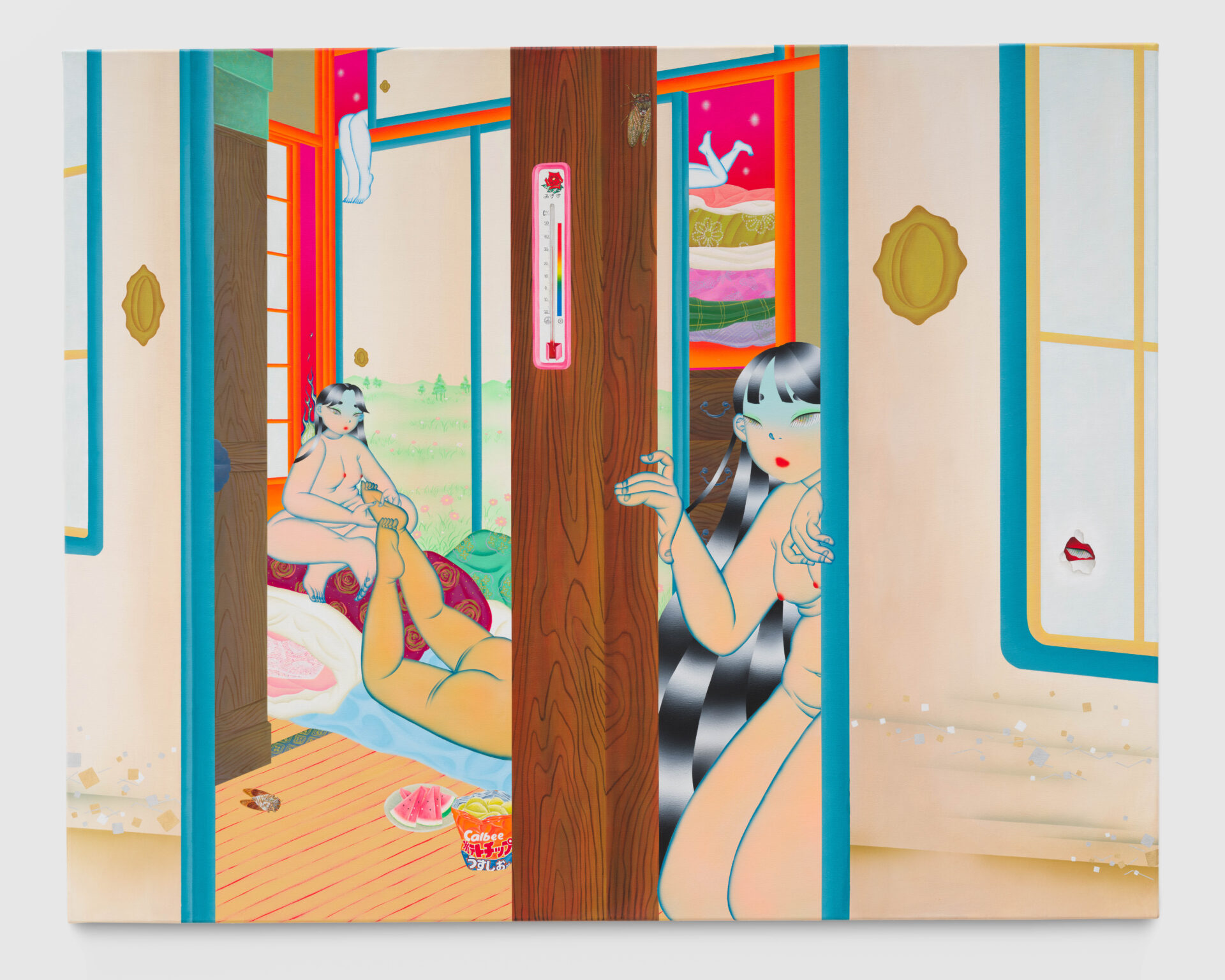
Maya Fuji, Tadaima, 2024
Maya Fuji
Artist Statement
Through painting and traditional craft, Maya Fuji explores the liminal space of being an issei (first-generation Japanese) mixed-race woman in the US. Her work embodies the way she has experienced shifts in tradition within her family and community after immigrating to the Bay Area. Inspired by mythology and folklore, she references Showa, Heisei, and Bay Area subcultures.
Her paintings portray nostalgic memories of childhood and the feelings of being foreign in both Japanese and American communities. Through these lived experiences, her work meditates on the ways ethnically mixed people, immigrants, and children of immigrants keep traditions alive while creating new ways of living.
Fuji investigates the mythological animism of Tsukumogami and Yaoyorozu No Kami, highlighting the dualistic nature of her cultural experiences. While Tsukumogami are household objects that obtain spirits over a century (referencing Hyakkiyakō Emaki scrolls 1336~1573), Yaoyorozu No Kami are drawn from the Shinto belief that gods reside in all things. She envisions these spirits immigrating to the US with her family and how they would exist within her own experiences growing up in the Bay Area during the 90s and 2000s, intersecting potent cultural and technological references to a time period globalizing the world we reside in.
While At Headlands
While at the Headlands, I would like to take the time to experiment with new ideas and to expand the scale of my paintings. I plan to begin a new series examining the Sento (public bath) as a unique third place in Japanese culture, utilizing it as a metaphorical space that compares and contrasts Japanese and US cultural attitudes regarding nudity, modesty, and the differing social customs of how we connect with one another.





